| |
Screening Tests for Older PWH Including Recommendations from IAS-USA & NYS Clinical Guidelines
|
| |
| |
Download the PDF
Download the PDF
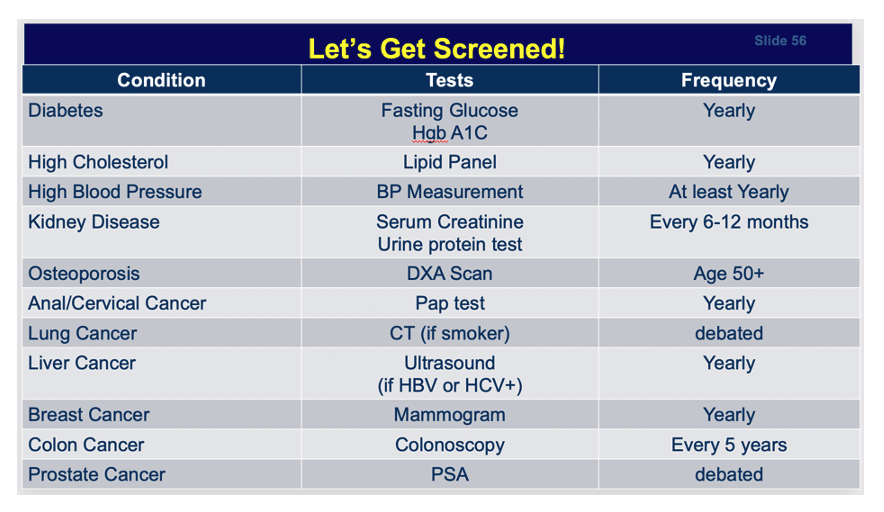
IAS-USA Guidelines Dec 2022
https://www.natap.org/2022/HIV/120122_09.htm
HIV and Aging
Recommendations for older people with established HIV are summarized in Box 4. Not only is the prevalence of HIV and diagnoses of new infections in people older than 50 years increasing, but more than half of older people with HIV are diagnosed at a late stage of disease (ie, CD4 cell count <350/I1/4L).86,87 Delayed diagnosis is a lost opportunity to initiate ART early for maximal health benefits and for prevention of transmission.
"There is an ongoing growing burden of neurocognitive dysfunction and frailty in people aging with HIV, which results in decreased quality of life, greater health care utilization, and higher mortality.95,96 Recommendations for screening and management of comorbidities in older people with HIV, assessment of functional impairment and frailty, and evaluation of neurocognitive impairment are unchanged since the previous report.1 Recent studies have shown that accumulation of comorbidities had greater negative effect on neurocognitive performance than did HIV disease parameters.97,98
The aging of people with HIV has highlighted the need for integrated care models, including multidisciplinary teams of geriatricians, HIV specialists, pharmacists, and allied health practitioners (such as physiotherapists) offering holistic patient-centered care.101-103
Listed below in Box 4:
assess polypharmacy & simplification of complex regimens, both ART & comorbidity treatments, if possible.
Screen for
Comorbidities
Impaired cognitive function
Poor mobility
Frailty
Falls risk
These are recommended for olde PWH using validated tools.
Consider Integrated Care Models
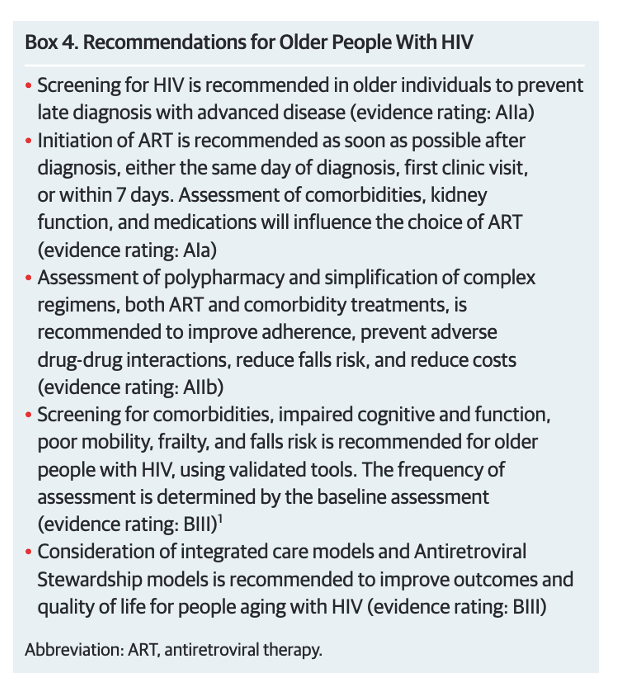
NYS Clinical Guidelines say.....regarding Geriatric Care
https://www.hivguidelines.org/guideline/hiv-aging/?mycollection=hiv-care#tab_3
The goals of this guidance are to:
• Raise clinicians' awareness of the needs and concerns of patients with HIV who are ≥50 years old.
• Inform clinicians about an aging-related approach to older patients with HIV.
• Highlight good practices to help clinicians provide optimal care for this population.
• Provide resources about aging with HIV for healthcare providers and their patients.
• Suggest steps to guide medical settings in implementing geriatric care into HIV clinical practice
Screening identifies individuals who are at risk for medical problems. Although care providers may order screening tests for specific diseases such as cancer, they may not be as familiar with screening tools designed to identify functional impairment or geriatric syndromes. In all cases, the same principles apply: brief, sensitive geriatric screening instruments such as those included in Box 1, below, can be used to identify patients who may need more intensive evaluation.
For those programs that are just starting to identify the needs of their older patients, a general screening questionnaire is an excellent place to start. General screening questionnaires are usually appropriate for all older patients and long-term survivors and often are performed annually around a patient's birthday. Such screenings can be completed before a clinic visit; some questionnaires are completed by the patient and others are administered by a staff member. The modified World Health Organization integrated care for older people (ICOPE) screening tool has been tested for people with HIV in a New York State-wide pilot and can be administered by staff in person or over the phone; sites can also use other surveys based on workflows.
Why perform general geriatric screening? Not every patient requires a formal geriatric assessment. Tools for general geriatric screening are simple and cover a wide variety of domains; if the results indicate that more extensive assessment is warranted, then a more formal and comprehensive evaluation can be performed. Use of general screening tools can improve case-finding and, when coupled with referral, can enable targeted interventions but has not yet been shown to reduce hospitalizations or improve function Rubenstein, et al. 2007.
Recommendations from community advisory boards and patient surveys can advise sites about patient priorities, and results from general screenings can prompt more broad assessments to identify high-prevalence problems. It may be difficult to implement needed aging-related assessments when access to expertise or funding is limited, but every attempt should be made to assess aging-related issues to the degree possible. Table 1, below, lists domains of geriatric assessment and selected resources for older patients with HIV.
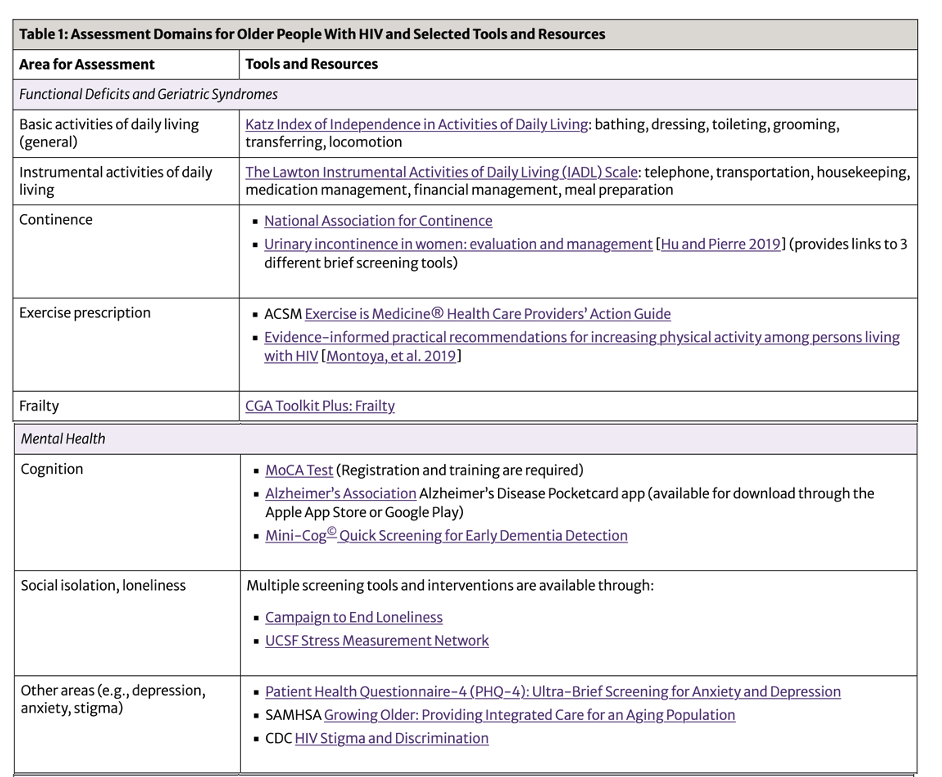
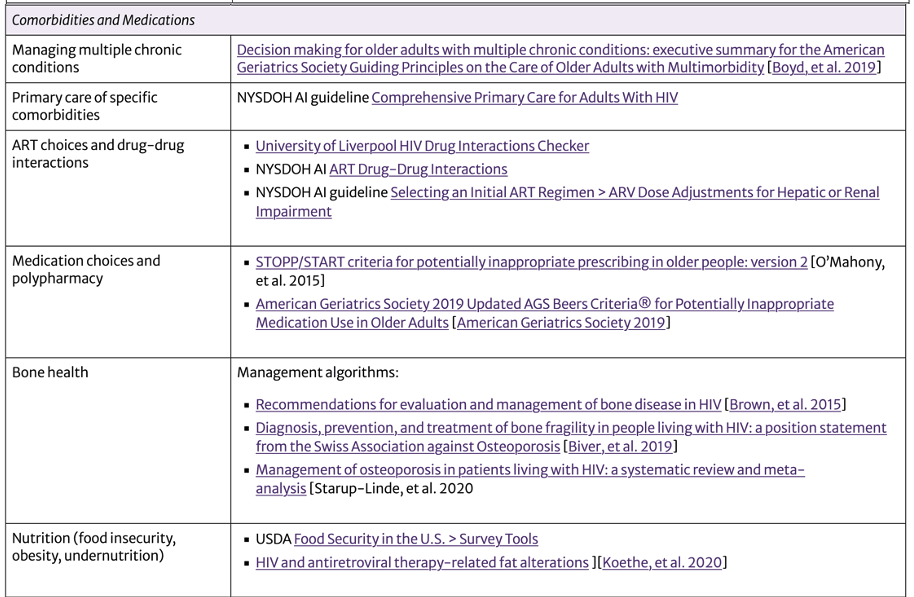
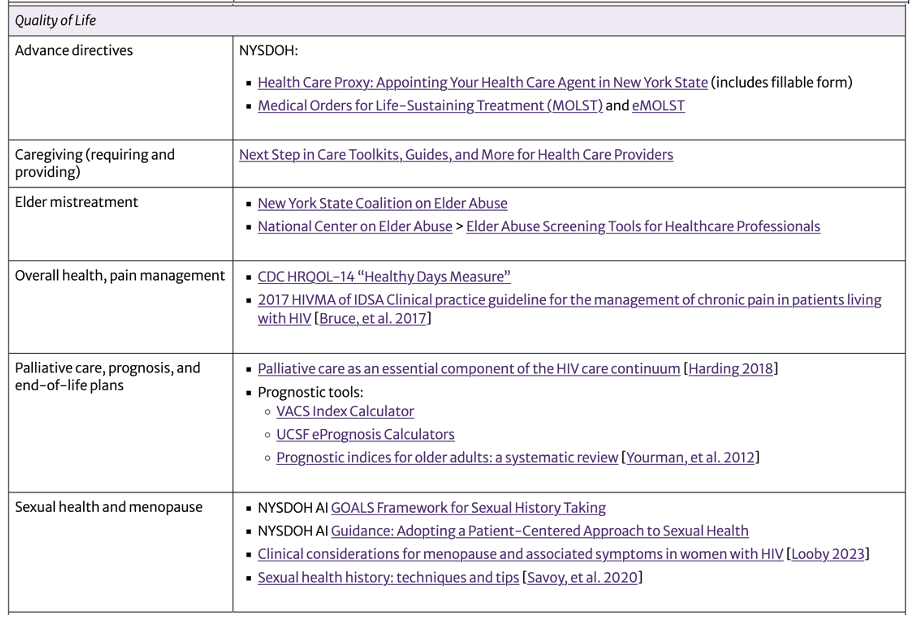
This guidance is designed to foster a shift in the practitioner's perspective when caring for older patients with HIV. However, the clinician cannot provide optimal care in the absence of support. Clinical practices can also begin to address HIV-related aging issues by taking the steps outlined in Box 2, below.
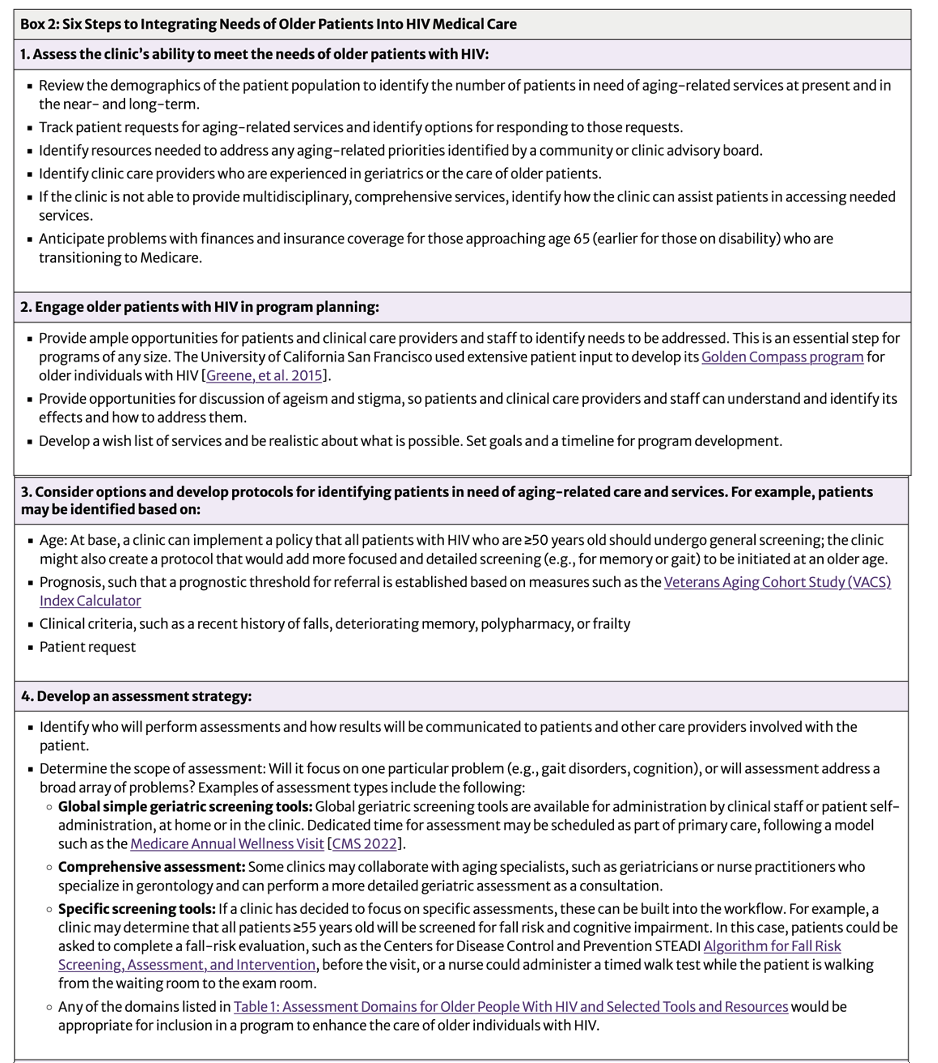
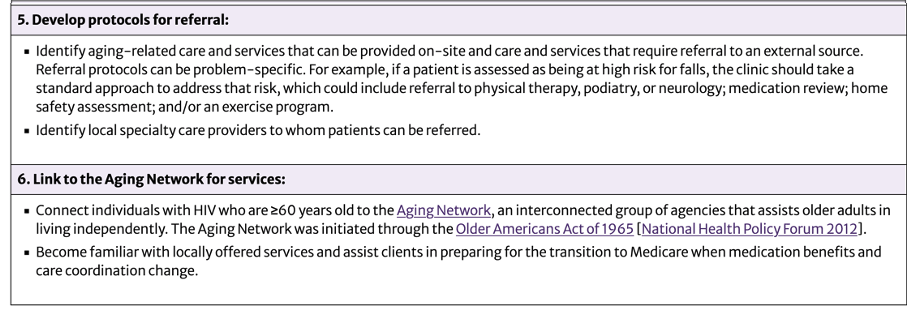
|
|
| |
| |
|
|
|